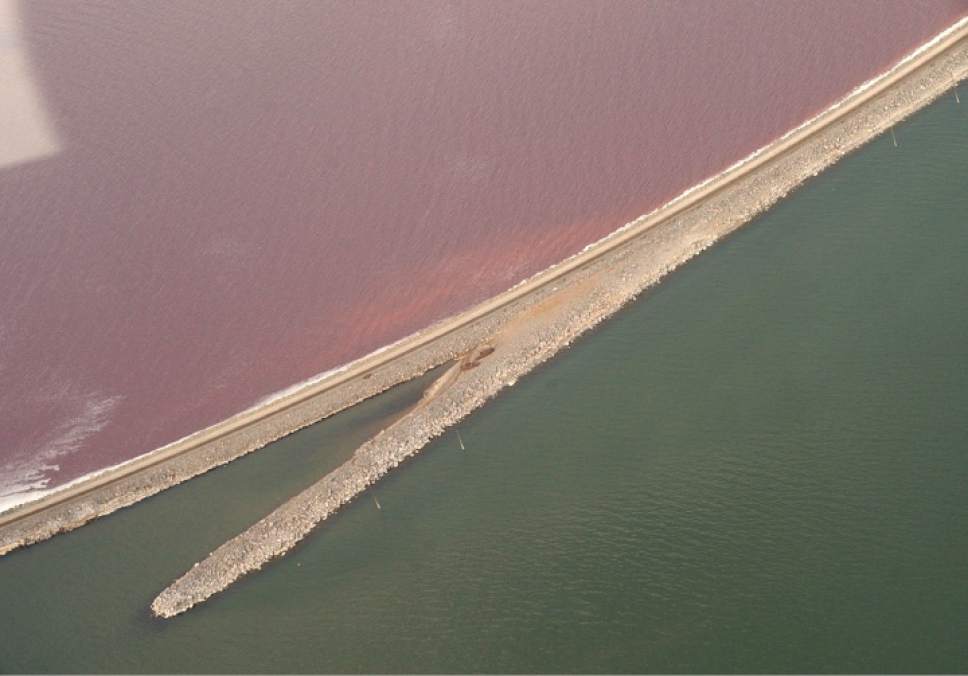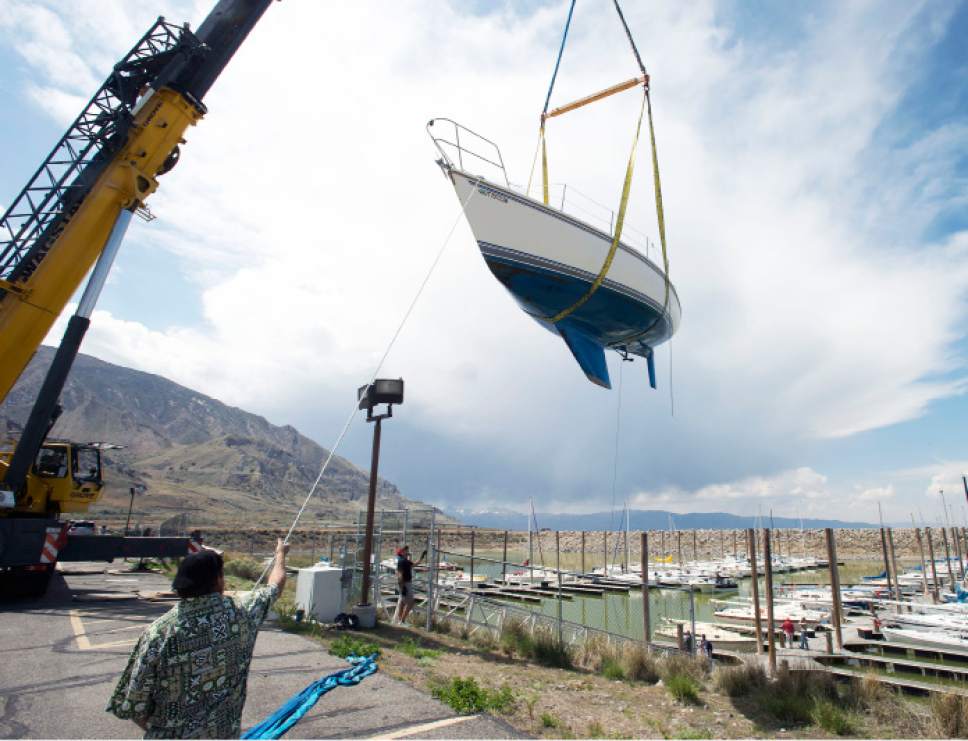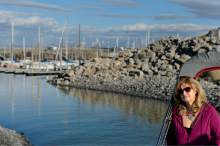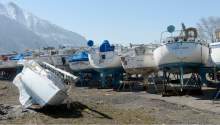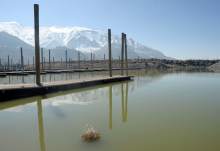This is an archived article that was published on sltrib.com in 2016, and information in the article may be outdated. It is provided only for personal research purposes and may not be reprinted.
Sailors are pulling many of the remaining boats from the Great Salt Lake State Marina this week in light of news that the causeway bisecting the lake will be breached Dec. 1.
The breach will allow water from the north and south arms of the Great Salt Lake to circulate once again. But when that happens, state models suggest the water level on the south end could drop by about a foot. A 1 percent increase in salinity is also expected in the south arm, said Laura Ault, sovereign lands program manager for the Utah Division of Forestry, Fire and State Lands.
Harbormaster Dave Shearer said he has recommended that those who still have boats in the marina, which is in the Great Salt Lake's south arm, remove their boats before the breach occurs. Otherwise, he said, the boats could sit with their keels in the mud all winter long.
There are 63 boats in the water at the marina, which has a capacity of 320, Shearer said. Another 150 boats are in storage or sitting in the marina parking lot.
It's not clear whether the Great Salt Lake search and rescue boats, based at the marina, will be able to operate after the breach is opened. One rescue boat, the shallowest, will be left in the marina, Shearer said. In order for it to remain operational, the water level at the mouth of the marina must be at least 1.7 feet.
As of Monday afternoon, marina water levels are just 1 ½ to 5 feet deep, Shearer said. The Great Salt Lake's south arm itself was sitting at an elevation of 4,192.5 feet, according to the U.S. Geological Survey — up slightly from the record low of 4,192.4 feet, set earlier this year.
Utah State Parks plans to begin dredging the marina's northwest basin in January to restore some use of the marina, Shearer said, but the extent to which sailors will be able to use the marina next spring will depend on whether lake levels recover or continue to decline.
"I'm leery to give any estimates, because there are factors that are unknown right now," he said. "We certainly hope the dredging will be successful, but we also hope we go into a wetter weather pattern, so all our lakes get more water."
Shearer said northern Utah would have to build a snowpack in the range of 130-140 percent of normal to raise the lake level to any significant degree.
Local sailors, according to Great Salt Lake Yacht Club commodore Janet Robins, are "totally frustrated" by the situation. She said she suspected many of the boats currently docked — or parked — at the marina may be relocated.
"People own sailboats because they love to sail," she said, "and this marina has become such a nightmare that there's no sailing happening."
Robins estimated that the state stood to lose some $500,000 in revenue if the Great Salt Lake sailors take their boats out of state and stop paying to rent space at the state marina.
The state's promise to begin dredging the marina this January, she said, may be too little, too late. Water levels are already so low that even with the dredging, she said, only the smallest sailboats — maybe 15-20 percent of the boats usually docked at the marina — will be able to make use of the facility next year.
"The half-assed dredging in January will allow rescue boats in and out, but that's all," she said. "Basically our marina will be toast. They're not taking the steps to maintain it to a level that will make it functioning; they're just doing the bare minimum."
Had State Parks seen the writing on the wall — the declining lake levels and the pending causeway breach, which has been in the works for five years — Robins said they could have taken action and dredged the marina before low lake levels forced boats out of the water. In that case, those sailors would have continued to pay for their spaces at the dock. The dredging project, for which the state has allocated about $1.5 million, could have paid for itself in three years, she said.
State Parks had intended to begin dredging in July 2015, but ran into delays, said Eugene Swalberg, a public information officer for the agency. Drought caused the lake to fall to much lower levels than were expected, he said, so the state decided to dredge the marina 2 feet deeper — which presented some unexpected engineering difficulties.
Those issues should be wrapped up by mid-December, he said, which will allow the project to begin in January. From there it should take three to four months to complete the dredging, barring further delays.
The timing of the dredging project coming soon after the causeway breach was coincidental, he said.
The causeway, which conveys a Union Pacific Railway line across the Great Salt Lake, limits the flow of water between the north and south sections of the Great Salt Lake. Culverts built beneath the causeway originally prevented it from cutting off circulation entirely. But the culverts began collapsing, and in 2011, Union Pacific started filling them in to ensure the structural integrity of the tracks above them.
To replace the culverts, Union Pacific agreed to open a breach, which will be traversed by a bridge, elsewhere on the causeway.
Justin Jacobs, a spokesman for the company, said the railroad is glad to be able to move forward.
Originally, the Union Pacific planned to open the breach this past fall. But industry groups, environmental advocates and state officials came together to call for a delay. Filling the culverts, they said, had cut off the north end of the lake from the influx of fresh water on the south end, concentrating salt in the more shallow north arm.
When the two arms are joined again by the breach, they said, the sudden influx of salt into the south arm could stress brine shrimp populations, which are in an especially vulnerable stage of life in the fall. Low brine shrimp counts going into the winter and spring would affect the populations of birds that winter at the Great Salt Lake.
By Dec. 1, that critical stage will have passed, meaning the impact on brine shrimp and on the birds and industry that rely on them should be much smaller than it would have been, Ault said.
Twitter: @EmaPen


